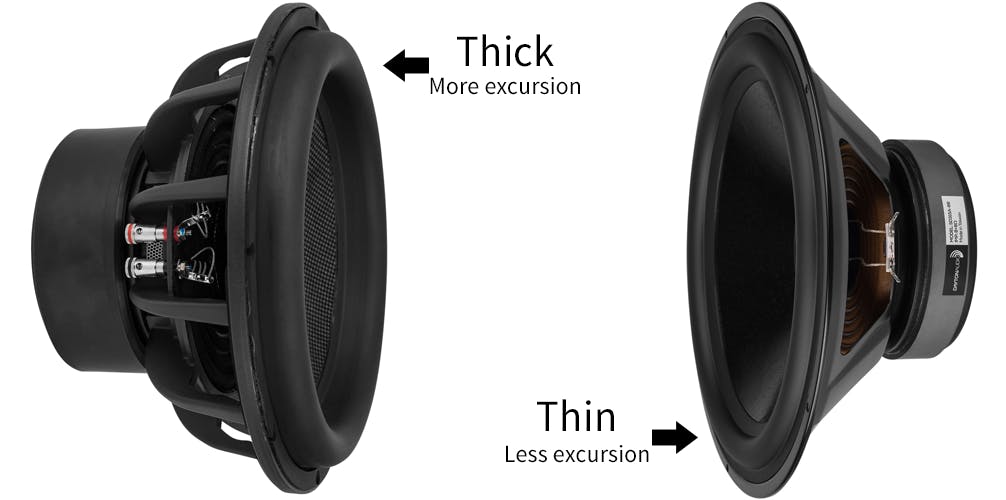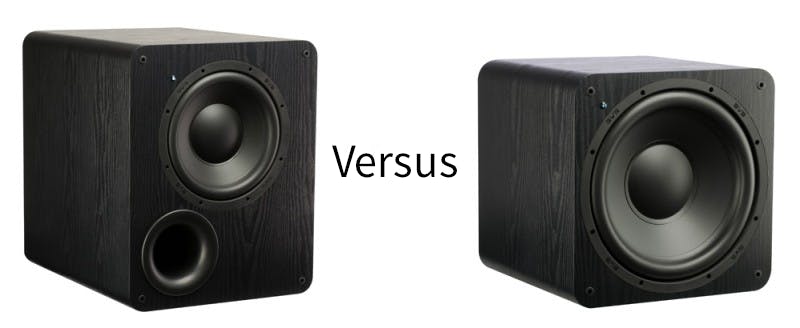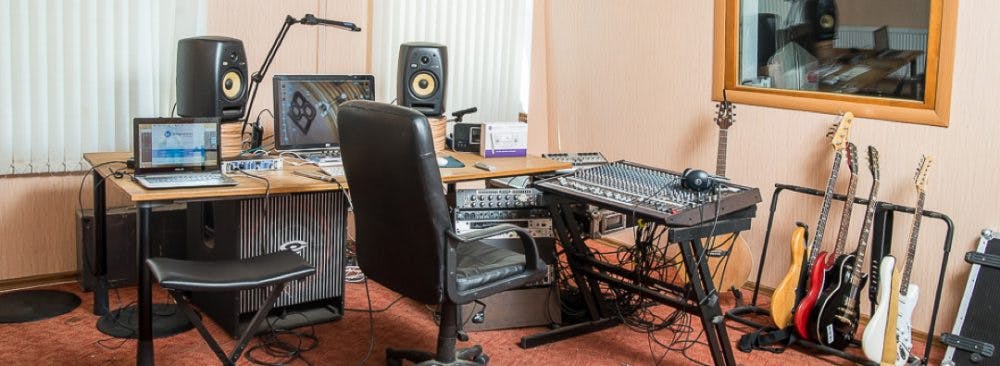There are plenty of articles out there about the best studio subs out there, this one will be a bit different. We haven’t heard or measured all studio subwoofers out there, so it’s not easy to give you straight recommendations. Instead we’ll teach you how to be bass-smart. This article will explain what to look for when shopping for a subwoofer to improve your low-end capabilities.
Too much is enough
The first question you need to ask yourself is how much bass you require. The good news is that you can’t really buy a too large or powerful subwoofer as long as you can turn it down. You won’t get your money’s worth out of a 3kW 18” sub running at 1/100 output, but it won’t sound bad. A wimpy 8” 100W sub running out of steam is a situation where you don’t want to find yourself. Ever.
You can’t really buy a too large or powerful subwoofer as long as you can turn it down.
Subwoofers work by pressurising your room. If regular speakers shoot music lasers at your ears (trust me on this), subs make bass by making your room smaller or larger. They shrink and expand by moving their drivers, thus the air in your studio will change pressure and you’ll feel this difference. So, the general rule of thumb is that larger drivers move more air than smaller ones provided they’re doing identical amounts of excursion.

So even if you can eyeball the driver size (or read the specs), making sense how much air the driver can move is a bit trickier. Usually high excursion drivers have thick rubber surrounds that look like tire tubes. It won’t necessarily mean good sound, but it’s a good sign that drivers go low. As for driver size – 12” is usually enough to hit lower twenties in a sealed box. Which leads us to the age old discussion…
Sealed vs ported
Much ink (and maybe even blood) has been spilled on the topic whether a good subwoofer should have a hole. We asked some of the major speaker manufacturers for the final answer on this topic but none budged. Instead we got some useful insights regarding the pros and cons of each design.

90% of the time integration will impact the overall sound more than the type of subwoofer enclosure one is using.
“Sealed cabinets have a lower group delay and a faster transient response. However a sealed cabinet suffers from acoustical inefficiency therefore the output is lower and the distortion is higher. A larger sealed cabinet and amplifier is needed for the same audio quality as a vented cabinet. Reverse these arguments for a vented cabinet.” -Neumann-
“Sealed offers better time behaviour (group delay time) for lower frequencies compared to a ported design. Unfortunately a sealed design will have a higher low cut frequency. To lower this frequency a boost can be necessary which increases also the group delay time. With a boost you also need to take care about thermal protection and power of the amp section.” -Eve Audio-
“[…] there are as many opinions as there are technical data points to back them up. I personally prefer a bass-reflex system as I believe it provides a more real-world experience that will better translate.” -Adam Audio-
“As most studios are smaller spaces, the extra output and low frequency extension from a ported subwoofer isn’t necessary, so I would recommend a sealed subwoofer. The added low frequency extension you get from room gain makes the additional output and depth less important. We specifically design all SVS subwoofers to make the best use of room gain. Sealed subwoofers also have an advantage over ported in terms of transient response, or the ability to start and stop on a dime, which is important when recording.” -SVS-
The truth as always is somewhere in between, therefore choose a sealed sub:
- if your studio isn’t particularily large
- if the chosen sub can reach the SPL’s you require
- if your chosen sub can go as low as you require
Get a ported sub:
- if your studio is BIG
- if sealed subs won’t go as loud as your monitors
- if your chosen ported sub goes as low as you need
- AND make sure your ported sub is tuned LOW (ask the manufacturer)
For studio work a sealed subwoofer seems to be the optimum choice as long as you can get it go loud and low enough. In most small studios a 12” sealed sub should be enough, for ported designs 10” is sufficient. And keep in mind that 90% of the time integration will impact the overall sound more than the type of subwoofer enclosure one is using. We’ll cover that in a future article!
Bass electronics
Besides a sturdy box and a giant driver, most decent subs will have an amplifier and filter unit. Usually subs come equipped with class-D plate amps ranging from 100W up to a few kilowatts. We wouldn’t recommend sweating the watts too much, SPL is what matters in the end. With that said extra power never hurts, especially with sealed subs which are extremely inefficient.
Filtering is a bit more complicated. I’d recommend looking for a sub with built in variable hi-pass filters which send higher frequency content to your monitors. Otherwise integrating the sub can get pretty complicated. Luckily most studio subs do come with these filters.
Then there are hi-fi and passive subwoofers. In theory both shouldn’t be worse than purpose made studio subwoofers, but in practice it takes extra know-how to make them work well. Often home theater and hi-fi subs don’t have variable filters for signal throughput and passive subs mean you’re basically on your own.
To sum it up
If you want your monitoring to dive deep, nothing beats a good subwoofer. Keep in mind these points and you’ll be on the right track to good insightful bass:
- A 12” sealed sub will be sufficient most of the time as long as it can get enough SPL’s
- Having a variable hi-pass filter with outputs makes integration much easier
- To keep it simple always stick to one bigger sub, instead of multiples
Ask away in the comments if you have any questions and don’t hesitate to call us out if something’s dead wrong!



